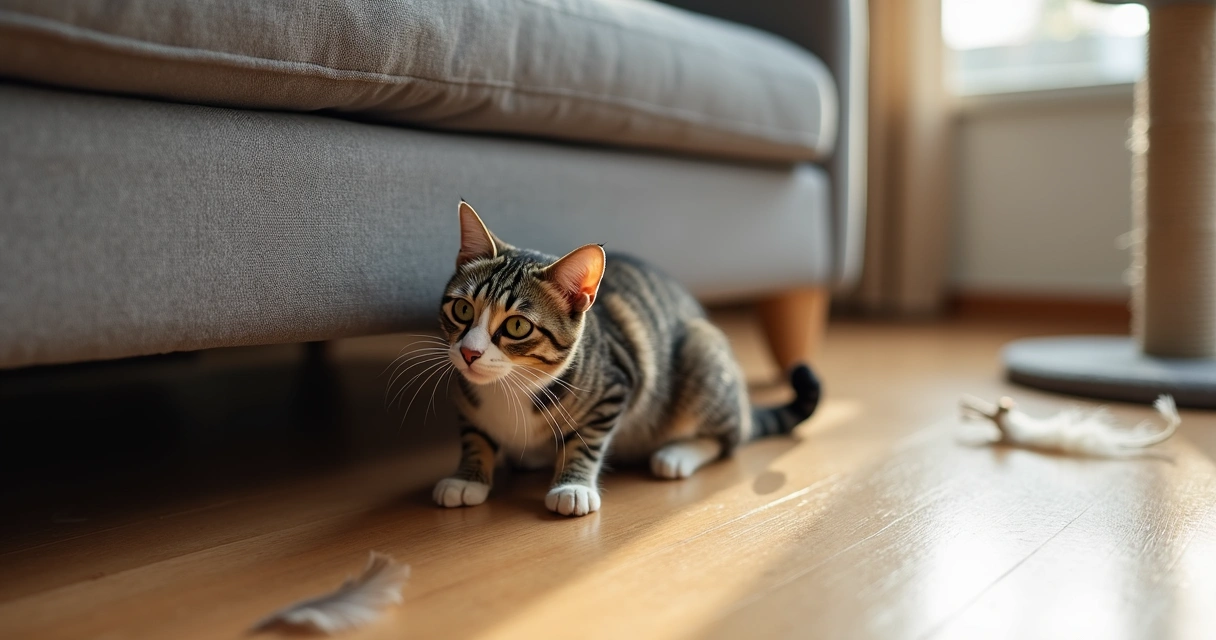One moment your cat melts into your lap. The next, a swat, a nip, a hiss, and you pull your hand back in surprise. I have been there, quietly counting my breaths, wondering what I missed. Aggression in cats can feel sudden, but it rarely is. There are reasons. There are patterns. And yes, there are ways to help.
Before anything else, let’s level set. Cats use aggression to create space, to stop contact, or to control a situation that feels risky. The behavior can be scary, yet it is often a message. When we read the message, change gets possible.
Safety first. Curiosity next.
Why cats get aggressive
Cats show aggression for many reasons, and more than one can stack up at once. Some of the most common:
- Fear or anxiety. A loud noise, a new person, a strange scent. If escape feels blocked, claws and teeth speak up.
- Play that tips into arousal. Fast hands, wiggling feet, laser lights with no “catch.” Excitement spikes, then bite.
- Petting intolerance. Some cats enjoy only brief touch. The longer the strokes, the stronger the protest.
- Redirected aggression. A cat sees a trigger outside, cannot reach it, then turns on the nearest target.
- Territorial or status tension. New cats, new dogs, changed routines, or even new furniture.
- Pain or medical issues. Dental pain, arthritis, thyroid disease, skin discomfort. Pain changes patience.
- Maternal protection. Queens defending kittens often warn first, but they will act fast if needed.
The numbers show how common this is. According to the Cornell Feline Health Center, 27% of cats given up for behavior reasons were surrendered because of aggression. And a peer‑reviewed study indexed on PubMed found that 49.5% of cats had shown aggression toward people at some point, often during petting or play. That sounds high, yet it also means change is possible when we match the plan to the cause.
Early signs that matter
Before a bite, most cats whisper with their body. If we spot the whisper, we avoid the shout.
- Ears turn sideways or flatten.
- Pupils enlarge, often with a fixed stare.
- Tail flicks or thumps, quick and sharp.
- Skin ripples over the back.
- Low growl, huff, or a single sharp meow.
- Body turns sideways, weight shifts back, ready to bolt.
When you see two or more, pause the interaction. Give space. Let the cat reset.

What to do next
I like simple steps. Not perfect, just practical. Try this sequence and adjust to your cat.
- See your veterinarian. Any sudden change, or aggression during petting in a spot your cat used to love, hints at pain. Rule this out first.
- Track triggers for a week. Note time, place, people, animals, and what happened right before. Patterns often appear by day three.
- Protect hands and feet. Stop rough play with fingers or toes. Switch to wand toys, balls that bounce, and kickers the cat can rabbit-kick.
- Short petting sessions. Count five slow strokes, then stop. If your cat asks for more, add two. If the tail flicks, end on a calm note.
- Reward calm, not drama. Toss a treat away from you when your cat settles. Calm behavior should pay well.
- Lower stress in the room. Add vertical space, more hiding places, and separate feeding spots. Predictable routines help a lot.
- Manage redirected episodes. If your cat lashes out after spotting a bird outside, close blinds and separate for 12 to 24 hours. Let arousal fade fully.
- Split and slow introductions. With multi-cat homes, use scent swapping, meal-time doors, and short visual sessions. Rushing often backfires.
- Never punish physically. The Cornell guidance notes that physical punishment tends to increase fear and can make aggression worse. It is tempting, I know. Please skip it.
Enrichment makes all of this easier. Puzzle feeders, hunting games at dawn and dusk, and a simple cardboard tunnel can soften edge and tension. If grooming is a trigger, pain or mats may be involved. Gentle care through cat grooming services can make touch feel safe again.
Household tips that keep everyone safe
- Set up safe zones. Cat-only shelves, a high perch in a quiet room, and a covered bed help your cat opt out with dignity.
- Guide kids kindly. Teach still hands, soft voices, and “count to five, then stop.” No chasing, ever.
- Plan for guests. Keep the cat in a calm room with food, water, and a litter box when visitors arrive, especially if noise is high.
- Use doors and gates. During high arousal, separation saves everyone. You can repair trust later, not during a spike.

When you need extra hands
Sometimes you do everything right and still feel stuck. That is normal. Behavior change takes time. If you live near Gloucester, MA, the team at Dogtown understands both dogs and cats, and how mixed households can raise stress. Start with a low-pressure chat about options through the training programs, then match support to your home.
If home feels tense or you need a breather, short stays in calm boarding suites can help reset routines. And for families juggling dog energy that riles up cats, supervised day camp options for dogs can lower daily chaos so the cat can rest. The staff shares daily feedback, which I find comforting on long days.
Dogtown is a local space with a simple goal. Better days for pets, less guesswork for you. You can learn more about the facility, the pre-enrollment assessment, and the people behind it at Dogtown in Gloucester, MA.
Wrapping up
Cats are not being mean. They are trying to feel safe, sometimes with pointy tools. If we spot the early signs, match play to their style, and give them control over touch and space, behavior often softens. When aggression shows up, pause first. Then adjust. Small steps, repeated, work better than big swings.
If you would like help building a plan, schedule a friendly assessment with Dogtown. Meet the team, see the spaces, and choose a path that suits your cat’s comfort. Your next calm week can start now.
Frequently asked questions
What causes aggression in cats?
Most cases come from fear, pain, or frustration. Triggers include rough play, too much petting, territorial tension, or seeing a threat outside and not reaching it. Medical issues like dental pain or arthritis can lower tolerance and should be checked first.
How to stop my cat's aggression?
Start with a vet exam, then track triggers. Keep petting short, switch to wand toys, and add safe spaces and a steady routine. Avoid physical punishment, since it raises fear. Separate during spikes and reward calm behavior with treats and rest.
Is cat aggression normal behavior?
It is a normal way for cats to protect themselves, but frequent or severe episodes signal stress or pain. The Cornell Feline Health Center notes many surrenders are linked to aggression, which shows how common it is and why early support matters.
What are signs of cat aggression?
Watch for flattened ears, dilated pupils, tail flicks, skin ripples, growls, and a tense sideways body. These early cues often appear before a swat or bite. Pause the interaction when you see two or more signs together.
Can aggression in cats be treated?
Yes, in many cases. A plan that treats medical pain, reduces triggers, and adds structured play can lower aggression. A study on PubMed found many cats show aggression during petting or play, which means context changes help. Consistency is key.





